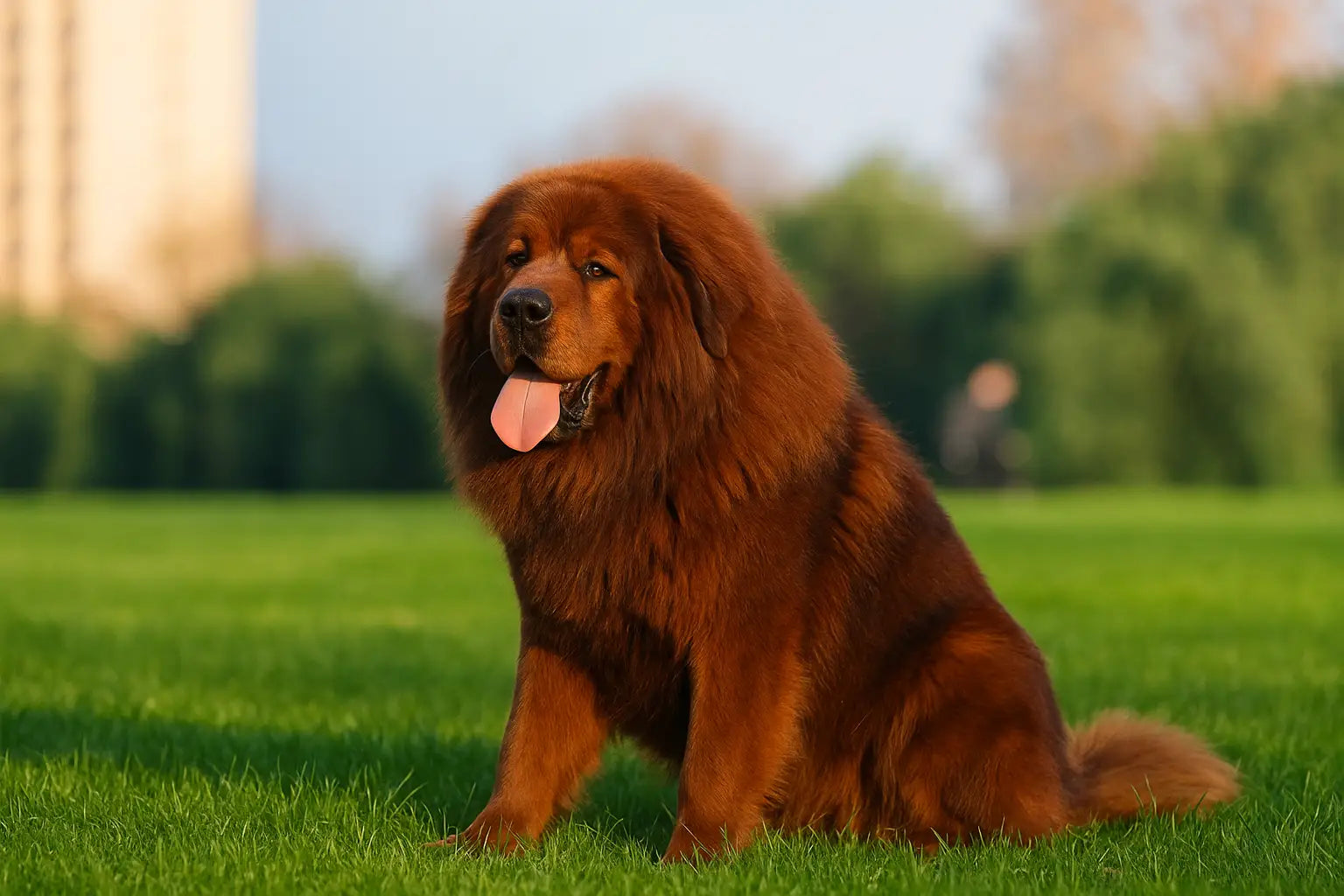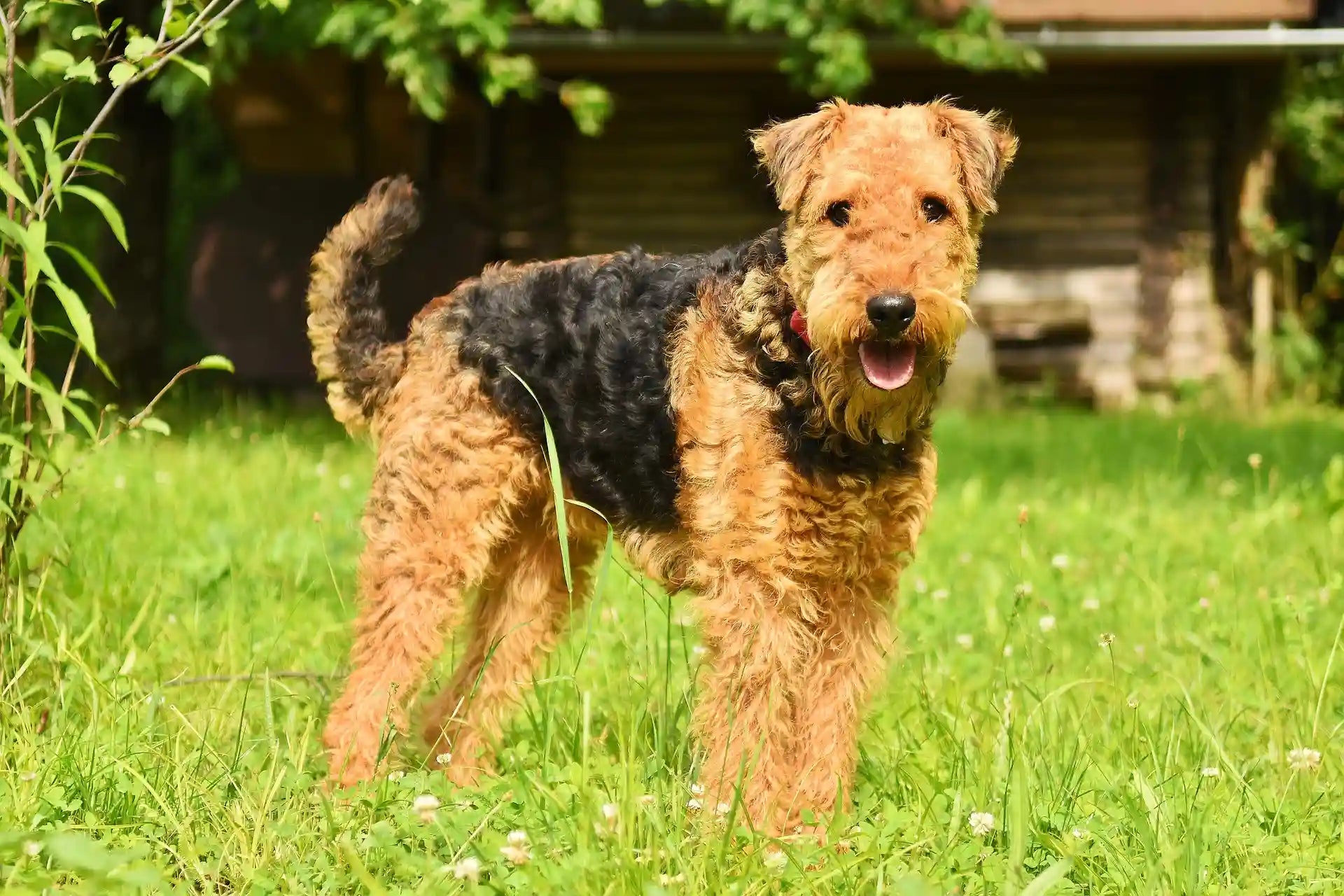
Chinese Tibetan Mastiff: Complete Care & Training Guide
Known for their majestic appearance, powerful build, and fiercely loyal nature, the Tibetan Mastiff, also referred to as the Chinese Tibetan Mastiff—is truly one of a kind. Bred to guard flocks and monasteries in the harsh climates of the Himalayas, these dogs carry centuries of protective instinct. They are not just pets but guardians, companions, and symbols of strength.
Quick Facts Overview
|
Trait |
Details |
|
Size Category |
Large to Giant |
|
Height & Weight |
Height: 61–76 cm; Weight: 40–70 kg (can be more) |
|
Coat Type & Colours |
Thick, dense double coat; black, brown, gold, blue-grey, or tan combinations |
|
Energy Level |
Moderate |
|
Origin |
Tibet/China |
|
Grooming Needs |
High |
|
Temperament |
Protective, independent, calm, aloof with strangers |
|
Trainability |
Moderate to Low (needs experienced owners) |
|
Compatibility |
Best with experienced owners; not ideal for first-time dog owners |
|
Lifespan |
10–14 years |
Breed Origins and History
The Tibetan Mastiff, also known as the Chinese Tibetan Mastiff, is one of the oldest and most revered breeds in the world. Originating centuries ago in Tibet, these dogs were bred to guard nomadic herders’ livestock and protect monasteries. Their enormous size, thick coat, and independent spirit allowed them to thrive in the freezing Himalayan winters. Traditionally, Tibetan Mastiffs worked with little direct supervision, leading to their famously strong-willed nature today. While they’ve adapted to modern family life in many countries, they remain instinctively protective and territorial.
Personality and Temperament
Tibetan Mastiffs are calm and dignified, yet fiercely loyal to their families. They are not overly affectionate like some breeds but form deep bonds with those they trust. They’re naturally wary of strangers and can be aloof when meeting new people. Early socialisation is critical to ensure they are confident but well-mannered adults. These dogs are independent thinkers, and while they adore their families, they prefer respect and space over constant cuddles.
Trainability and Intelligence
The Tibetan Mastiff is an intelligent breed, but one that values its independence. Training requires patience, consistency, and respect.
-
Start early with socialisation and basic obedience
-
Use positive reinforcement—harsh methods don’t work with this breed
-
Short, firm, and fun training sessions work best
-
A strong, reliable training harness ensures safe control
-
Keep treats handy in a treat bag for rewarding good behaviour
Exercise and Activity Requirements
Despite their size, Tibetan Mastiffs are not hyperactive dogs. They enjoy moderate daily exercise and time outside but are just as content lounging near their family once their guarding instincts are satisfied.
-
45–60 minutes of daily exercise
-
Secure, large backyard for roaming is ideal
-
Morning or evening walks are better to avoid overheating
-
Use a strong hands-free lead for better comfort during walks
-
Mental stimulation, like obedience drills or puzzle toys, keeps them engaged
Physical Characteristics
Tibetan Mastiffs are striking in appearance, exuding strength, nobility, and presence.
-
Height: 61–76 cm
-
Weight: 40–70+ kg
-
Coat: Thick double coat, heavier around the neck creating a "mane"
-
Colour: Black, brown, gold, blue-grey, or tan combinations
-
Require large dog gear
Living Environment Suitability
Tibetan Mastiffs, or Chinese Tibetan Mastiffs, need space—both physically and mentally. They’re not suited to small apartments or homes without yards.
-
Best for rural properties or homes with large, secure yards
-
Fencing must be strong and high—these dogs can jump or climb surprisingly well
-
Sensitive to heat; prefer cooler climates or air-conditioned homes
-
Relax best on a durable orthopaedic dog bed
-
Car travel requires a secure dog car harness
Grooming and Maintenance
Their thick coat requires commitment, especially during shedding season.
-
Brush 2–3 times a week; daily during spring and autumn shedding
-
Bathe only when necessary to preserve natural coat oils
-
Check ears and paws regularly for debris or infections
-
Trim nails monthly to prevent discomfort
-
A soft, strong collar suits their thick neck without rubbing
Common Health Issues
Tibetan Mastiffs are generally hardy but can be prone to certain health concerns.
-
Common issues: hip dysplasia, elbow dysplasia, hypothyroidism, entropion (eye issue)
-
Monitor weight to protect their joints
-
Provide joint support with a quality orthopaedic bed
-
Regular vet check-ups catch issues early
Diet and Feeding Guidelines
Nutrition plays a major role in keeping Tibetan Mastiffs healthy and strong.
-
Puppies: High-quality large-breed puppy food to support slow, steady growth
-
Adults: Balanced large-breed formula focused on joint health and weight maintenance
-
Portion control is essential to avoid obesity
-
Always provide access to fresh, clean water
-
Portable food and water bowls are handy for outdoor trips
Compatibility with People and Other Pets
Tibetan Mastiffs are devoted protectors who can live harmoniously with their family, but their strong guarding instincts must be managed carefully.
-
Best with adults or families experienced with large, independent breeds
-
Can coexist with other dogs if raised together
-
Supervise around small pets and unfamiliar animals
-
Walk multiple dogs easily with a coupler lead
Behavioural Issues and Management
With their independent mind and protective instincts, Tibetan Mastiffs (Chinese Tibetan Mastiffs) can develop behavioural issues if not properly guided.
-
Aloofness or stubbornness with unfamiliar people
-
Barking, especially at night, if bored or alerting to "threats"
-
Resource guarding if not properly socialised
-
A reliable no-pull harness helps with safe lead control
-
Provide durable toys to occupy their strong jaws and prevent boredom
Essential Gear for Tibetan Mastiffs
Everyday Walking and Control
Comfort and Safety
Fun and Enrichment
FAQs: Tibetan Mastiff (Chinese Tibetan Mastiff)
1. Can you get a Tibetan Mastiff in Australia?
Yes, you can find Chinese Tibetan Mastiffs in Australia, but they are quite rare. Importing one can be expensive due to quarantine laws, and reputable breeders within Australia are limited. If considering one, be sure to choose a responsible breeder who prioritises health and temperament.
2. Is a Tibetan Mastiff a good family dog?
The Chinese Tibetan Mastiff can be a loyal and protective family companion but is not suitable for every household. They are naturally independent and strong-willed, which means they do best with experienced dog owners who can provide firm leadership and early socialisation.
3. Why are Tibetan Mastiffs so expensive?
Chinese Tibetan Mastiffs are among the most expensive dog breeds in the world due to their rarity, historical status as luxury pets, and the high cost of breeding them properly. Prices can skyrocket for puppies from champion bloodlines or rare colourations like the pure red Mastiff.
4. How much does a Tibetan Mastiff puppy cost?
A Chinese Tibetan Mastiff puppy in Australia typically costs between $5,000 and $12,000. Prices can vary based on lineage, breeder reputation, and coat colour. Some rare individuals have even been sold for over a million dollars internationally.
5. Can Tibetan Mastiffs be house dogs?
While it is possible, Tibetan Mastiffs are not naturally suited to life indoors all day. They were bred to guard livestock in harsh mountain environments and prefer having access to large, secure outdoor spaces. They thrive with room to roam and a clear job to do.
6. Are Tibetan Mastiffs good with other dogs?
Chinese Tibetan Mastiffs can be selective with other dogs. Early and careful socialisation is important. They tend to be protective and dominant, particularly with unfamiliar dogs, so supervision and slow introductions are essential.
7. How big do Tibetan Mastiffs get?
Adult Chinese Tibetan Mastiffs are large, powerful dogs. Males typically stand between 66 to 76 centimetres at the shoulder and weigh between 45 to 70 kilograms. Females are usually slightly smaller but still very solid in build.
8. How long do Tibetan Mastiffs live?
The average lifespan of a Chinese Tibetan Mastiff is around 10 to 14 years. A healthy diet, regular exercise, and access to high-quality veterinary care can help them live a long, fulfilling life.
9. Are Tibetan Mastiffs high maintenance?
Yes, they are considered high maintenance. Their thick double coat requires regular brushing to prevent mats, especially during seasonal shedding. They also need firm, consistent training and plenty of space to stay happy and healthy.
10. Can a Tibetan Mastiff be aggressive?
The Chinese Tibetan Mastiff is naturally protective and territorial. Without proper socialisation and training, they can become aggressive toward strangers or other animals. They are not typically aggressive within their family unit but require early guidance to develop balanced behaviour.
Final Thoughts
The Tibetan Mastiff (or Chinese Tibetan Mastiff) is not your typical dog—they are guardians, companions, and majestic protectors. With proper care, early training, and respect for their independent spirit, they become irreplaceable members of the family.
Looking for strong, durable gear to match your Tibetan Mastiff’s strength and loyalty? Visit EzyDog for premium harnesses, leads, beds, and accessories built for large, noble breeds like the Tibetan Mastiff.




Leave a comment
This site is protected by hCaptcha and the hCaptcha Privacy Policy and Terms of Service apply.